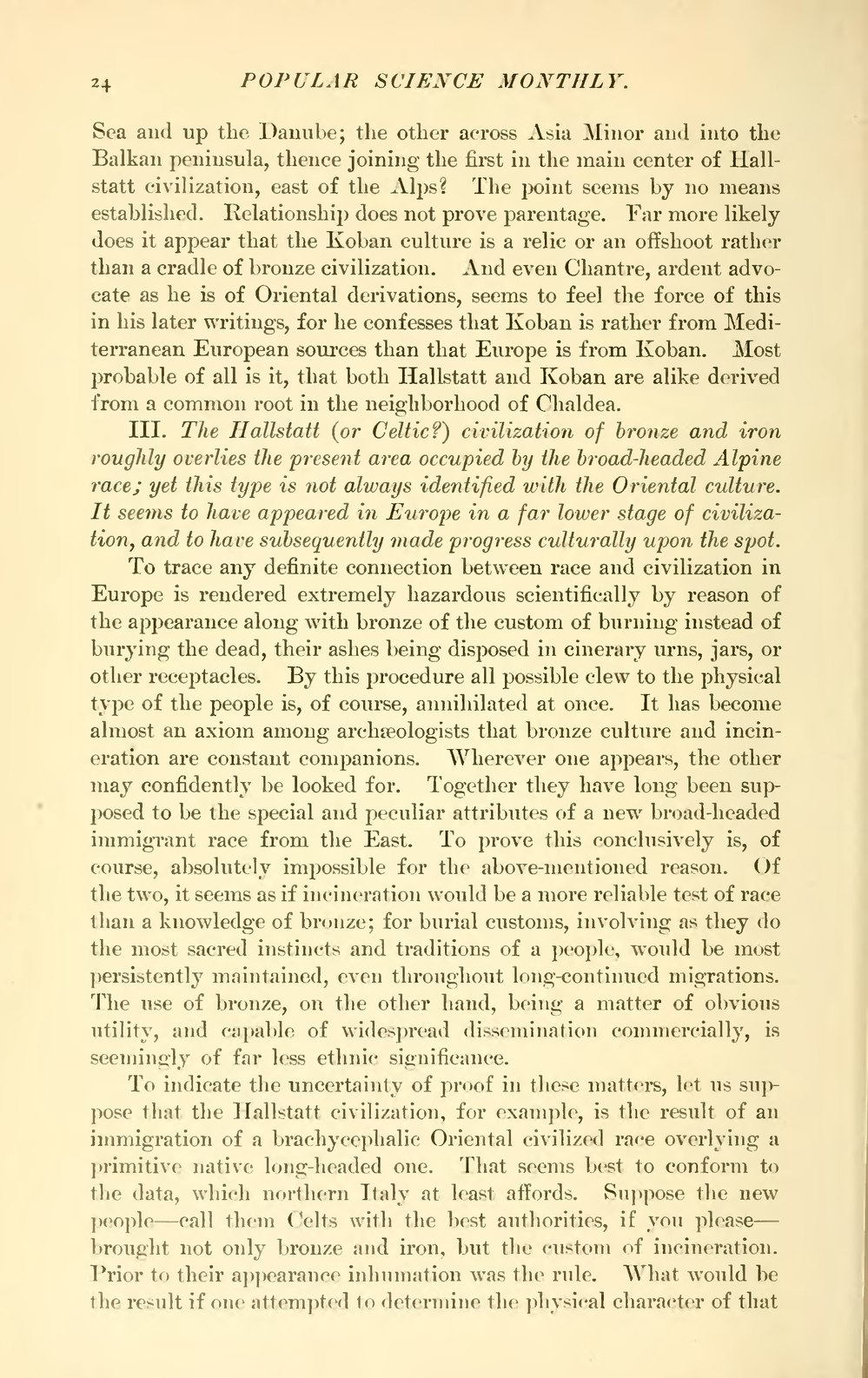Sea and up the Danube; the other across Asia Minor and into the Balkan peninsula, thence joining the first in the main center of Hallstatt civilization, east of the Alps? The point seems by no means established. Relationship does not prove parentage. Far more likely does it appear that the Koban culture is a relic or an offshoot rather than a cradle of bronze civilization. And even Chantre, ardent advocate as he is of Oriental derivations, seems to feel the force of this in his later writings, for he confesses that Koban is rather from Mediterranean European sources than that Europe is from Koban. Most probable of all is it, that both Hallstatt and Koban are alike derived from a common root in the neighborhood of Chaldea.
III. The Hallstatt (or Celtic?) civilization of bronze and iron roughly overlies the present area occupied by the broad-headed Alpine race; yet this type is not always identified with the Oriental culture. It seems to have appeared in Europe in a far lower stage of civilization, and to have subsequently made progress culturally upon the spot.
To trace any definite connection between race and civilization in Europe is rendered extremely hazardous scientifically by reason of the appearance along with bronze of the custom of burning instead of burying the dead, their ashes being disposed in cinerary urns, jars, or other receptacles. By this procedure all possible clew to the physical type of the people is, of course, annihilated at once. It has become almost an axiom among archæologists that bronze culture and incineration are constant companions. Wherever one appears, the other may confidently be looked for. Together they have long been supposed to be the special and peculiar attributes of a new broad-headed immigrant race from the East. To prove this conclusively is, of course, absolutely impossible for the above-mentioned reason. Of the two, it seems as if incineration would be a more reliable test of race than a knowledge of bronze; for burial customs, involving as they do the most sacred instincts and traditions of a people, would be most persistently maintained, even throughout long-continued migrations. The use of bronze, on the other hand, being a matter of obvious utility, and capable of widespread dissemination commercially, is seemingly of far less ethnic significance.
To indicate the uncertainty of proof in these matters, let us suppose that the Hallstatt civilization, for example, is the result of an immigration of a brachycephalic Oriental civilized race overlying a primitive native long-headed one. That seems best to conform to the data, which northern Italy at least affords. Suppose the new people—call them Celts with the best authorities, if you please—brought not only bronze and iron, but the custom of incineration. Prior to their appearance inhumation was the rule. What would be the result if one attempted to determine the physical character of that
